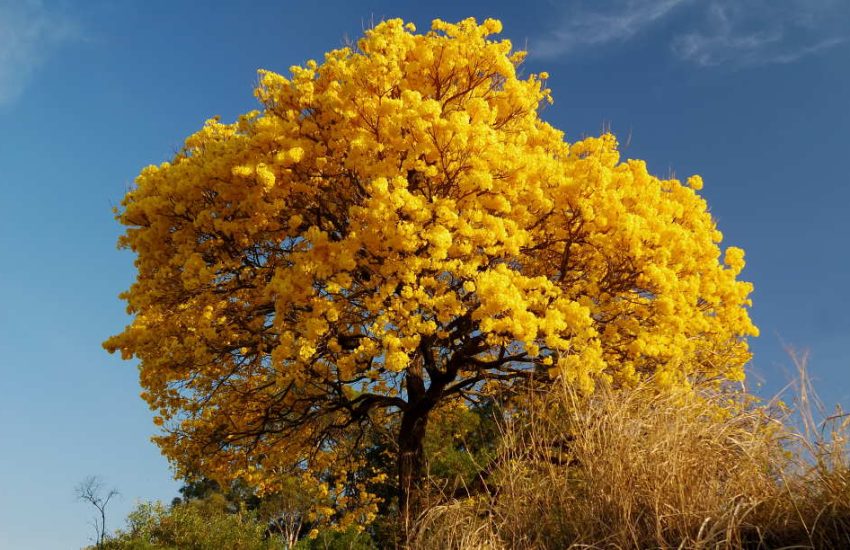Fast Growing Climbing Plants for Fences: Top Choices for a Lush Garden
Many homeowners desire a beautiful and vibrant garden that can enhance their outdoor living space. However, creating a lush garden can be challenging, especially if you have limited space. One way to add greenery to your garden without taking up too much space is by growing climbing plants on fences. Not only do they provide an attractive backdrop, but they also offer shade, privacy, and a habitat for birds and beneficial insects.
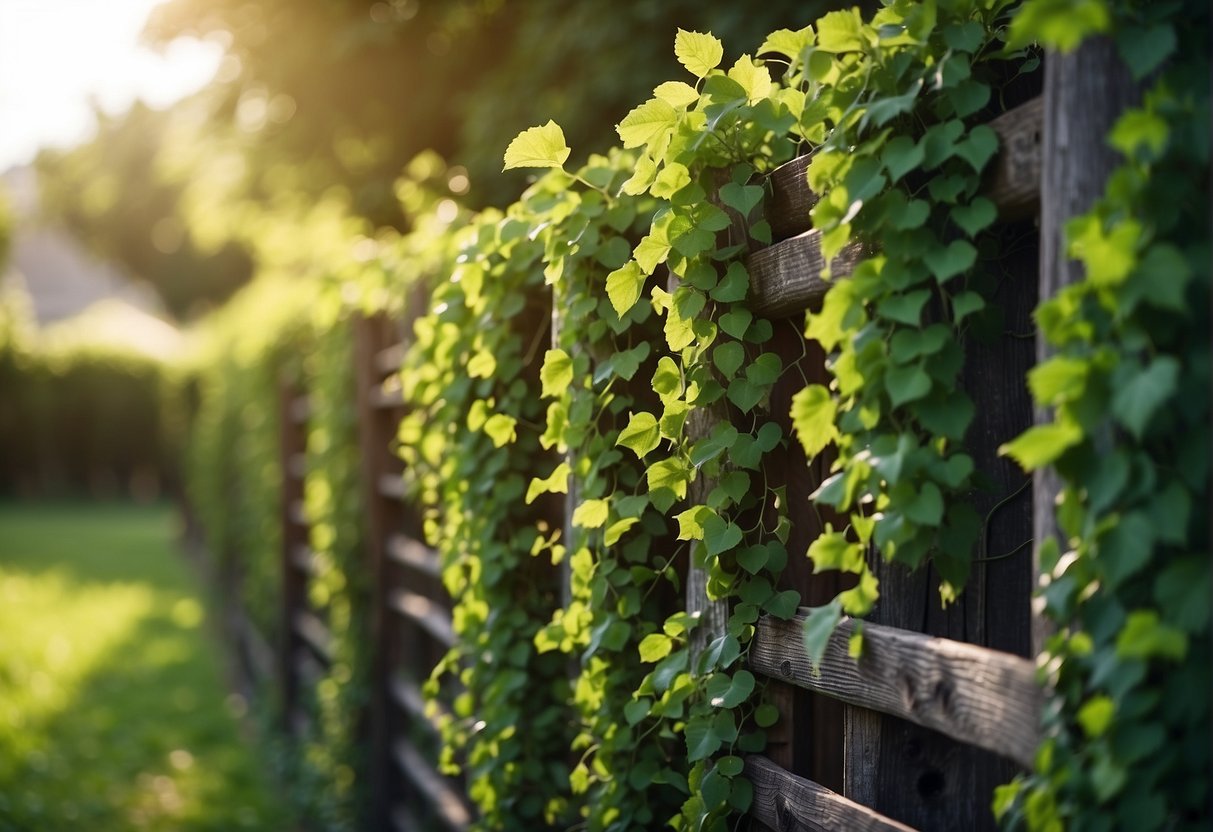
Fast-growing climbing plants are an excellent choice for homeowners who want to create an instant garden. They can quickly cover a fence, trellis, or wall, providing a lush green screen that can transform a dull outdoor space into a vibrant oasis. Whether you’re looking for a flowering climber or a foliage plant, there are many options available to suit your preferences. Some fast-growing climbers can grow up to 20 feet in a year, making them an ideal choice for those who want to create a garden quickly.
Choosing the Right Climbing Plants for Your Fence
When it comes to choosing the right climbing plants for your fence, there are several factors to consider. Two of the most important are assessing sunlight and shade requirements and considering plant hardiness and growth rate.
Assessing Sunlight and Shade Requirements
Before selecting a climbing plant for your fence, it’s important to assess the amount of sunlight and shade it will receive. Some climbing plants thrive in full sun, while others prefer partial shade. It’s important to choose a plant that is well-suited to the amount of sunlight and shade your fence receives.
Considering Plant Hardiness and Growth Rate
Another important factor to consider when choosing a climbing plant for your fence is its hardiness and growth rate. Some climbing plants are more hardy than others and can withstand colder temperatures and harsher conditions. Additionally, some climbing plants grow at a faster rate than others, which can be beneficial if you’re looking for fast results.
When choosing a climbing plant for your fence, it’s also important to consider factors such as the plant’s maintenance requirements and any potential pests or diseases. By taking the time to carefully assess your fence’s sunlight and shade requirements and considering the plant’s hardiness and growth rate, you can choose a climbing plant that will thrive and enhance the beauty of your fence for years to come.
Popular Fast-Growing Climbers
When it comes to adding privacy and beauty to a fence, fast-growing climbers are an excellent choice. In this section, we’ll explore some of the most popular fast-growing climbers that are perfect for fences.
Clematis Varieties
Clematis is a popular climbing plant that is known for its beautiful flowers. There are many different varieties of clematis, each with its own unique characteristics. Some of the most popular clematis varieties include:
- Jackmanii: A vigorous vine that produces large, deep purple flowers.
- Nelly Moser: A stunning plant with pink and white striped flowers.
- Sweet Autumn: A late-blooming clematis with small, fragrant white flowers.
Clematis is a versatile plant that can be trained to climb up a fence or trellis. It prefers a sunny location with well-drained soil.
Vigorous Ivy and Virginia Creeper
Ivy and Virginia Creeper are both fast-growing climbers that are perfect for covering a fence. Ivy is known for its glossy green leaves, while Virginia Creeper has leaves that turn a beautiful red in the fall. Both plants are easy to grow and require little maintenance.
It’s important to note that ivy can be invasive in some areas, so it’s important to check local regulations before planting. Virginia Creeper is a safer choice and is known to attract birds and other wildlife.
Flowering Favorites: Wisteria and Honeysuckle
Wisteria and honeysuckle are two of the most popular flowering climbers. Wisteria is known for its beautiful purple flowers that hang down in clusters, while honeysuckle produces fragrant flowers in shades of pink, yellow, and white.
Both plants can be trained to climb up a fence or trellis, and they prefer a sunny location with well-drained soil. Wisteria can be a bit finicky to grow, so it’s important to do your research before planting.
Overall, these fast-growing climbers are a great way to add privacy and beauty to a fence. Whether you choose clematis, ivy, Virginia Creeper, wisteria, honeysuckle, or climbing hydrangea, you’re sure to enjoy the beauty and benefits of these plants for years to come.
Plant Care and Maintenance
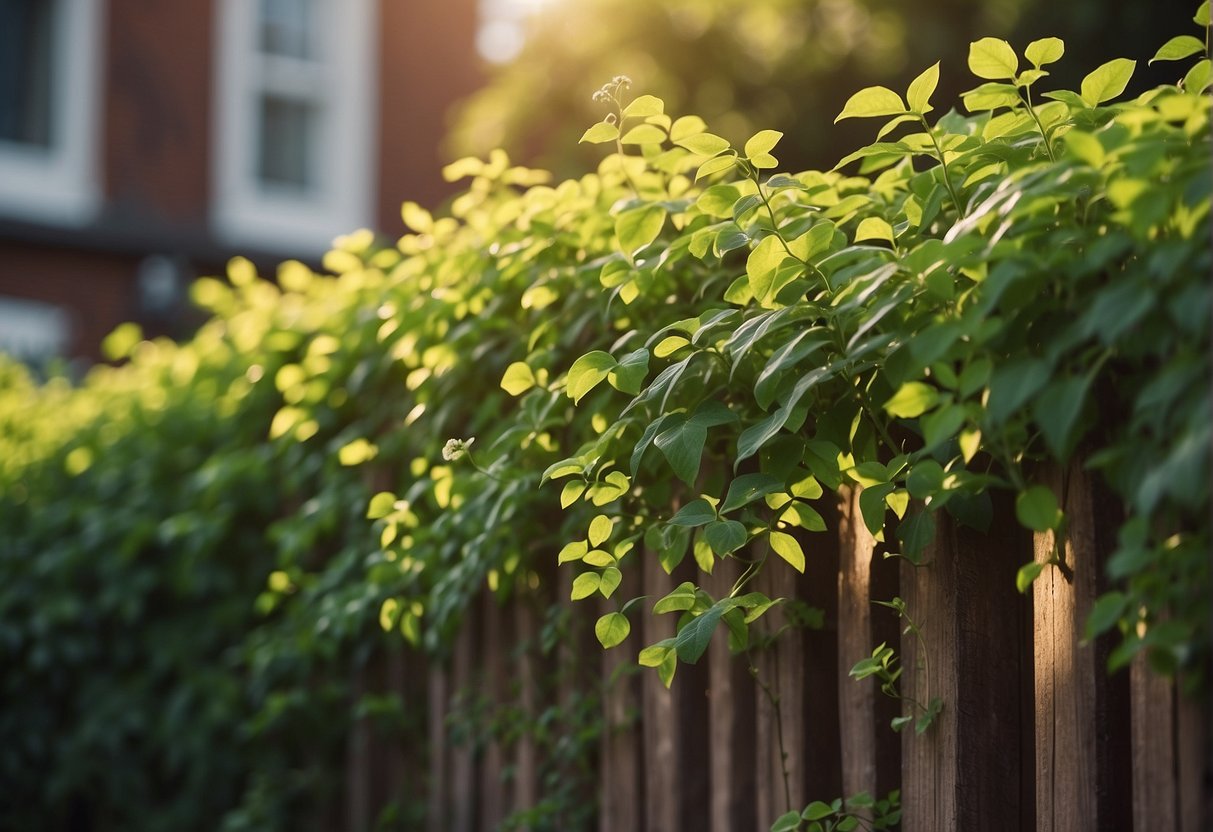
Climbing plants are relatively easy to maintain and care for. However, proper care and maintenance are essential to ensure optimal growth and prevent invasive species from taking over. Here are a few tips on how to care for and maintain your fast-growing climbing plants for fences.
Pruning for Optimal Growth
Pruning is an essential part of caring for climbing plants. Regular pruning helps to promote optimal growth and prevent the plant from becoming too heavy and damaging the fence. It is best to prune your climbing plants during the dormant season, which is usually in late winter or early spring.
When pruning, it is essential to remove any dead or damaged stems and branches. Additionally, you should also remove any weak or crossing stems to promote better air circulation and light penetration. Pruning also helps to control the size of the plant and prevent it from becoming too large for the fence.
Controlling Invasive Species
Invasive species can quickly take over and damage your climbing plants. Therefore, it is crucial to take steps to control them. One of the most effective ways to control invasive species is by regularly checking your plants and removing any weeds or unwanted plants that may be growing around them.
Another way to control invasive species is by using mulch. Mulching helps to suppress weed growth and also helps to retain moisture in the soil. Additionally, you can also use herbicides to control invasive species. However, it is essential to read the label carefully and follow the instructions to avoid damaging your climbing plants.
Soil and Fertilization
Climbing plants require moist and fertile soil to grow well. Therefore, it is essential to ensure that the soil around your plants is well-drained and fertile. You can improve the soil quality by adding organic matter such as compost or well-rotted manure.
Fertilizing your climbing plants is also essential to promote optimal growth. You can use a balanced fertilizer during the growing season to provide essential nutrients to your plants. However, it is essential to avoid over-fertilizing, which can lead to excessive growth and weak stems.
In summary, caring for and maintaining your fast-growing climbing plants for fences is relatively easy. Regular pruning, controlling invasive species, and providing adequate soil and fertilization are essential to ensure optimal growth and prevent damage to your fence.
Support Structures for Climbing Plants
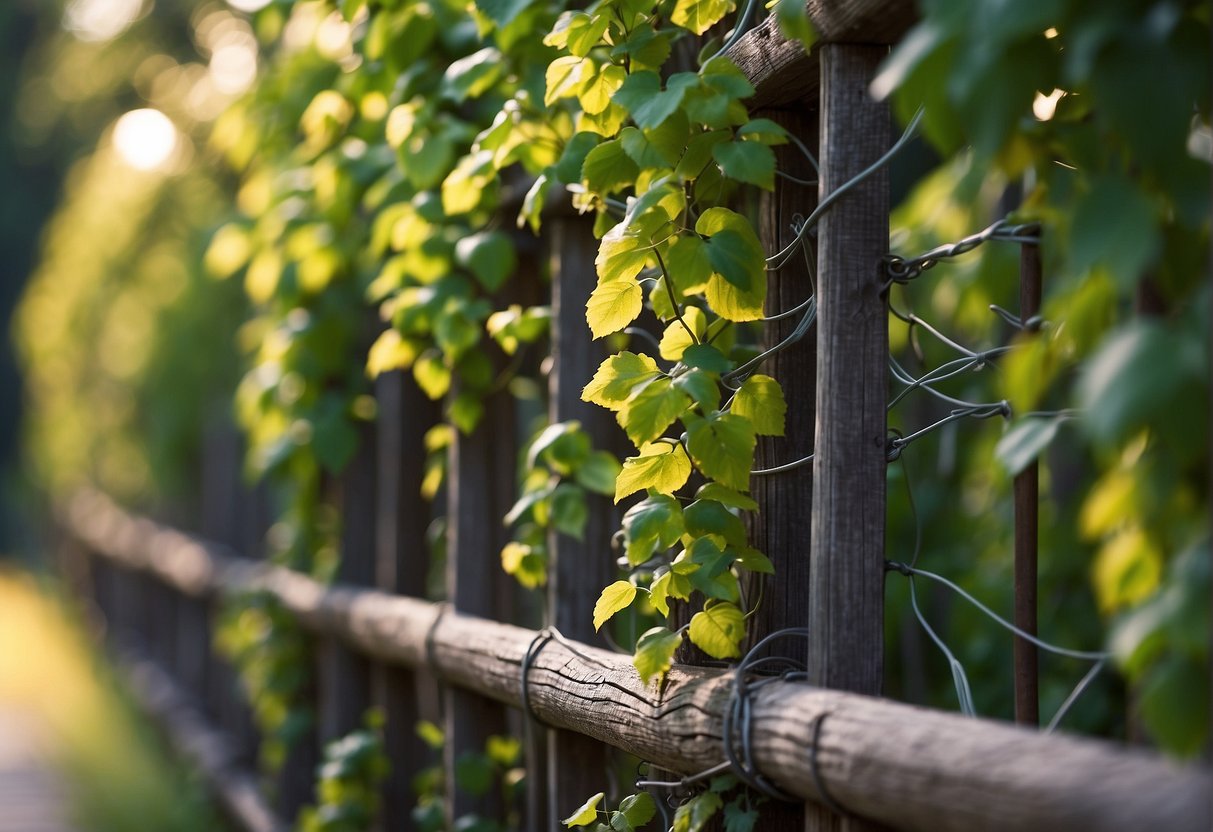
Climbing plants are a great way to add color and texture to a fence, wall, or building. However, they need support structures to climb on. Here are some options for installing support structures for climbing plants.
Installing Trellises and Pergolas
Trellises and pergolas are popular support structures for climbing plants. They are available in various materials such as wood, metal, and vinyl. Trellises are flat panels with a lattice design that can be attached to a fence or wall. Pergolas are larger structures that can be freestanding or attached to a building. They have an open roof with crossbeams and support posts.
When installing trellises and pergolas, it is important to choose a sturdy structure that can support the weight of the climbing plant. It is also essential to ensure that the support structure is securely anchored to the ground or wall. Climbing plants can become quite heavy as they grow, so the support structure needs to be strong enough to withstand the weight.
Natural Supports: Using Trees and Other Plants
Trees and other plants can also serve as natural support structures for climbing plants. For example, a sturdy tree with a strong trunk can provide an excellent support for a climbing plant. Other plants such as shrubs and bushes can also be used as natural supports.
When using natural supports, it is important to choose plants that are strong enough to support the weight of the climbing plant. It is also essential to ensure that the natural support is not damaged by the climbing plant. For example, a climbing plant with aerial roots can damage the bark of a tree if it is not pruned regularly.
In conclusion, there are various options for installing support structures for climbing plants. Trellises and pergolas are popular options, while trees and other plants can also serve as natural supports. It is important to choose a sturdy support structure that can withstand the weight of the climbing plant and to ensure that the support structure is securely anchored to the ground or wall.
Enhancing Garden Aesthetics with Climbers
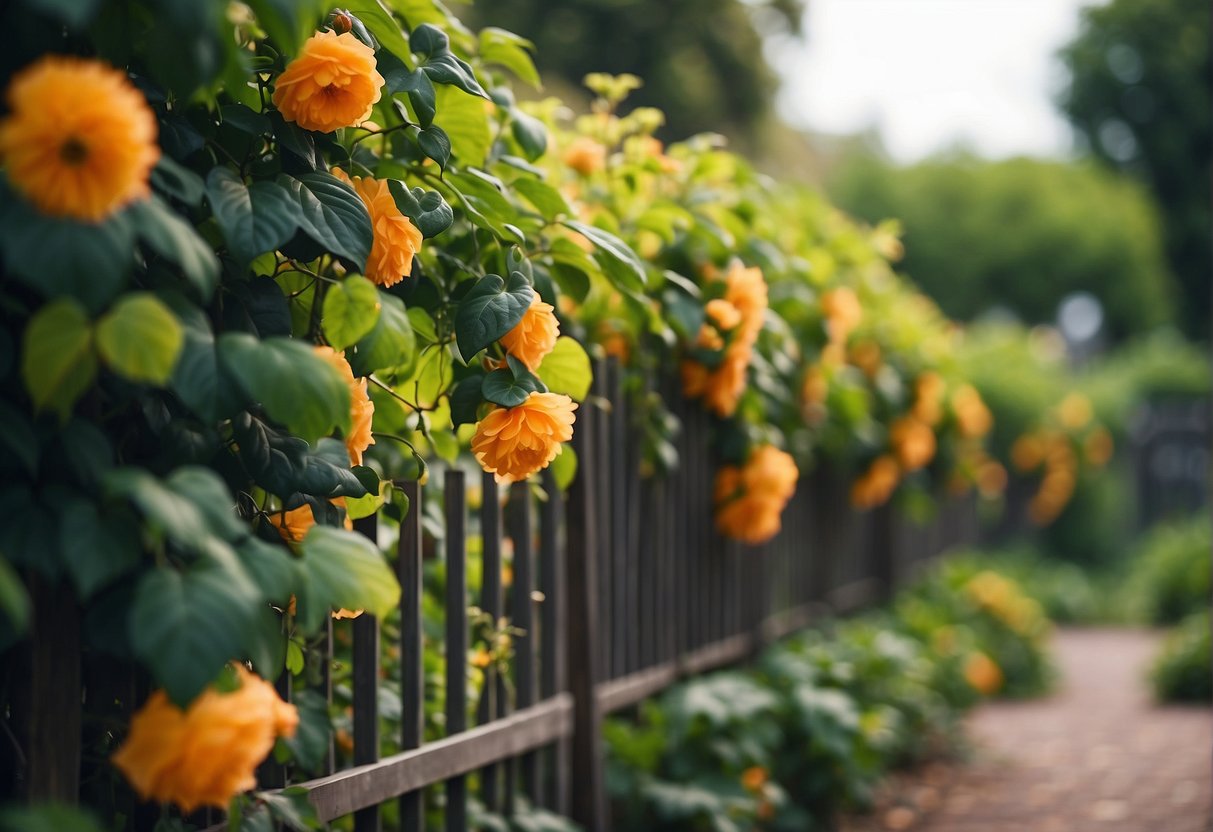
Climbing plants are a great way to add a touch of beauty and elegance to any garden. They can be used to enhance the aesthetics of fences, walls, trellises, and other structures. Here are some ways climbers can add color, fragrance, and wildlife to your garden:
Colorful Blooms and Foliage
Climbing plants come in a variety of colors and foliage, making them perfect for adding vibrancy to your garden. Some popular choices include:
- Clematis: These climbers come in a range of colors, from white to pink to purple, and produce large, showy flowers.
- Wisteria: Known for its stunning purple flowers, wisteria can also be found in white and pink varieties.
- Trumpet Vine: With its bright orange-red flowers, trumpet vine is a favorite of hummingbirds.
- Passionflower: This exotic-looking vine produces unique, intricate flowers in shades of purple and blue.
These are just a few examples of climbers that can add color and beauty to your garden.
Attracting Wildlife with Fragrant Vines
Climbing plants can also attract wildlife to your garden. Fragrant vines, in particular, can be a magnet for birds, butterflies, and other pollinators. Here are some fragrant climbers to consider:
- Honeysuckle: With its sweet fragrance, honeysuckle is a favorite of hummingbirds and butterflies.
- Jasmine: This fragrant vine produces delicate, white flowers that attract bees and other pollinators.
- Climbing Roses: Roses are known for their sweet scent, and climbing varieties can add a touch of elegance to any garden.
- Climbing Hydrangea: This vine produces fragrant, white flowers that bloom in late spring and early summer.
Adding fragrant climbers to your garden can not only enhance its aesthetics but also help support local wildlife.
In conclusion, climbing plants can be a great addition to any garden. They can add color, fragrance, and wildlife while enhancing the aesthetics of fences, walls, and other structures. Consider adding some climbers to your garden to enjoy their beauty and benefits.
Frequently Asked Questions
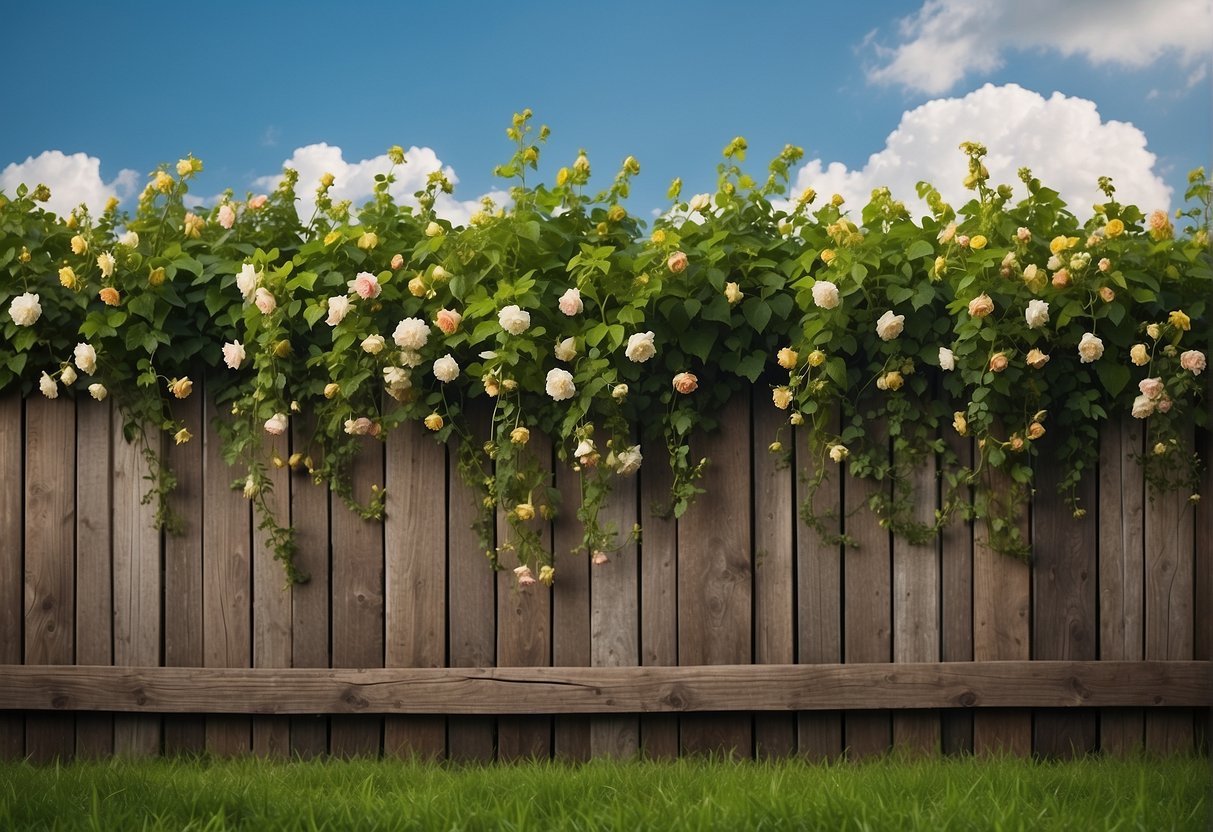
What are the top evergreen climbers that can rapidly cover fences?
Some of the top evergreen climbers that can rapidly cover fences include the English Ivy, Clematis Armandii, and Star Jasmine. These plants are known for their fast growth and ability to cover large areas quickly.
Which climbing plants are best suited for quick coverage of fences in full sun conditions?
For quick coverage of fences in full sun conditions, some of the best climbing plants include the Trumpet Vine, Bougainvillea, and Climbing Hydrangea. These plants are known for their ability to thrive in full sun conditions and their fast growth.
What varieties of vines offer the fastest privacy screens?
If you are looking for fast-growing vines that offer privacy screens, some of the best options include the Carolina Jessamine, Honeysuckle Vine, and Virginia Creeper. These plants are known for their ability to grow quickly and provide dense foliage for privacy.
Can you recommend any fast-growing climbers that are suitable for garden arches?
If you are looking for fast-growing climbers that are suitable for garden arches, some of the best options include the Wisteria Vine, Climbing Roses, and Clematis. These plants are known for their ability to grow quickly and provide beautiful blooms.
What are some of the quickest-to-grow climbing plants for shaded fence areas?
For shaded fence areas, some of the quickest-to-grow climbing plants include the Climbing Hydrangea, Boston Ivy, and English Ivy. These plants are known for their ability to thrive in shaded areas and their fast growth.
Are there any climbers that can grow quickly in pots for flexible placement?
If you are looking for climbers that can grow quickly in pots for flexible placement, some of the best options include the Mandevilla Vine, Climbing Nasturtium, and Sweet Pea. These plants are known for their ability to grow quickly and adapt to different growing conditions.


